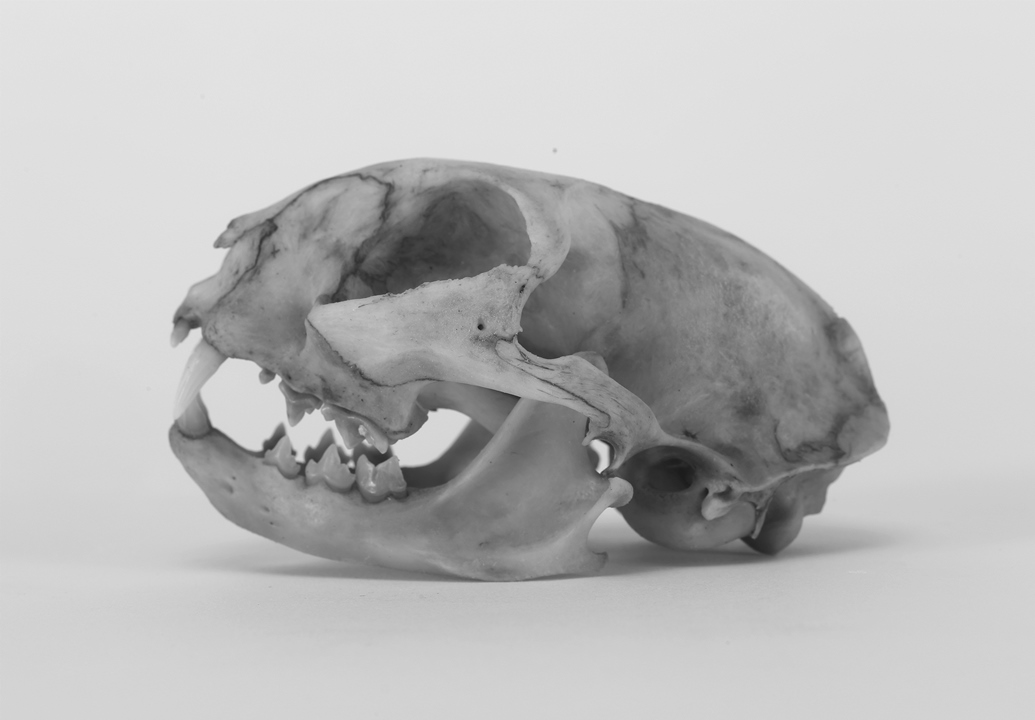DOMESTIC CAT*
Felis catus Linnaeus 1758
Order Carnivora : Family Felidae
*Introduced species
The skull of the domestic cat can be easily distinguished from those of native cats of the genera Leopardus, Lynx, and Puma by its small size; it differs further from that of the bobcat (Lynx rufus) in possessing an extra premolar on each side of the upper jaw. Externally, feral cats differ from bobcats in their long tail, smaller size, and variable coloration. Hybrids between bobcats and domestic cats have been produced in captivity, but they are sterile, and there are only a few authentic records of such hybrids occurring in the wild.

Feral cats, as well as pets that are allowed outside the house, are great decimators of wildlife, particularly of songbirds, small rodents, and lizards. People who release unwanted cats in the wild often do irreparable damage to wildlife populations in these areas. Thirty-three feral cats from Brazos, Robertson, and neighboring counties in the post oak woodlands of eastern Texas included the following items in their stomachs (listed in order of decreasing abundance}: insects (primarily grasshoppers and black crickets), cotton rats, cottontail rabbits, house mice, hispid pocket mice, deermice, domestic chickens, bobwhite quail, red-winged blackbirds, rough green snakes, fence lizards, racerunners, and little brown skinks.
From The Mammals of Texas, Seventh Edition by David J. Schmidly and Robert D. Bradley, copyright © 1994, 2004, 2016. Courtesy of the University of Texas Press.
Natural Science Research Laboratory
-
Address
Museum of Texas Tech University, 3301 4th street, Lubbock, TX 79409 -
Phone
806.742.2486 -
Email
nsrl.museum@ttu.edu

